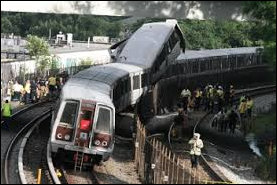The Washington Metro inspector general has identified new quality concerns with the work taking place on the second phase of the Silver Line: A sealant applied to prevent water from seeping into hundreds of defective concrete panels may not be working, and the rock ballast in the track beds of the rail yard could cause drainage issues and shifting of the track, reports the Washington Post.
If not corrected, the issues “will create extraordinary cost, maintenance and operational issues early once WMATA [the Washington Metropolitan Area Transit Authority] takes ownership and control of this project,” wrote Inspector General Geoffrey A. Cherrington.
Construction of the second phase of the Silver Line, an extension of the Washington transit rail system to beyond Washington Dulles International Airport, is already a year behind schedule. The latest deficiencies add to the list of quality issues raised about the $2.8 billion construction project. Last year officials discovered problems with hundreds of precast concrete panels installed at five of the six stations. The defect could lead to water seepage and premature deterioration. The general contractor applied a sealant to address the issue, but tests have shown that the coating was insufficient in at least 20% of the sampled panels.
The 11.5-mile Silver Line was originally scheduled to begin running in January 2020. The expected opening date is now not expected until “mid- to late 2020,” says the Post. Project officials say they don’t know if the re-work, change orders and delays will push the project cost beyond the budgeted $550 million contingency fund.
Bacon’s bottom line: Clearly, Phase 2 of the Silver Line is a troubled project. The question is. how culpable are the contractors and the Metropolitan Washington Airports Authority (MWAA), which has responsibility of overseeing the project before handing it over to WMATA? The construction industry is grappling with labor shortages nationally and, no doubt, in the Washington area. But the screw-ups identified so far appear to be quality-control issues that are the responsibility of management.
If there are significant cost over-runs, who will pay for them? Users of the Dulles Toll Road, who are footing much of the bill already? The taxpayers? How about the contractors? How about MWAA? Is anyone in the Northam administration on top of this?
(Hat tip: Rob Whitfield)


Leave a Reply
You must be logged in to post a comment.